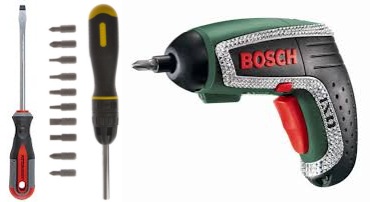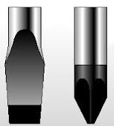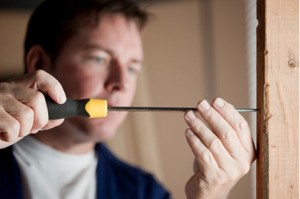Blog
The best way to use a screwdriver

Depending on what you need them for, there are three types of screwdrivers available. The first and most common is the basic hand-held manual screwdriver. Then there is the ratchet type that provides more torque and lastly, the electric-powered screwdriver for those that use screwdrivers frequently.
The hand screwdriver essentially consists of four parts – the handle, the shank, the blade and the tip. Further sub classification of a screwdriver is based on their tips and the type of screws they drive. The most commonly used are the slot-head and the Phillips-head screwdriver.

The slot-head, also called the flat head/regular screwdriver consists of a flat, single blade that matches the single slot of traditional screws. This happens to be the most common type of screwdriver all over the world and is the oldest type.
The Phillips-head screwdriver has a four-star point at the end of its shank and it fits into the corresponding cross-shaped, shallow depression of the screw. The user can apply more torque to the screw as compared to the flat-head type. The design of the Phillips-head and the depression on the screw forces the blades to slip out before any over-torque can harm the screw head.

If use screwdrivers often, you may want to invest in a ratchet type or an electric-powered type of screwdriver. The ratchet screwdriver has multiple replaceable bits for different types of screws. Its biggest advantage is the ratcheting device that locks the shank when turning clockwise, but unlocks when turning counter-clockwise. That means you need not remove the screwdriver tip from the screw head for each rotation you make. Just keep it in the slot of the screw head, and simply go back to the starting position.
When using a screwdriver, make sure you select the right kind for the job. If not, you may either ruin a perfectly healthy screwdriver or strip the screw head and make it difficult to remove later, if you have to.
Never use a flat-head screwdriver on a Phillips-head screw. Even if you do get by with this combination a few times, you are risking damage to both the screw as well as the screwdriver.
Make sure the tip of the screwdriver completely fills the screw head you are driving or removing. If the tip is too narrow, you will lose considerable torque and leverage while driving, and that means you have to put in more effort to complete the job. Additionally, you risk bending the tip of your screwdriver and/or stripping the screw head.
If the tip of your screwdriver is wider than the screw head, it may damage the surface you are screwing into. If the tip is too thick, the blade will not be able to drive the screw, as it will simply slip out. To use the right screwdriver for the job, you can use a suitable screwdriver-sizing chart.

Always drill a pilot hole before driving a screw into wood. There are two advantages when you do this. The pilot hole guides the screw into the wood and allows it to enter straight. Additionally, the pilot hole prevents the wood from splitting as you drive the screw in. Place the screw in the pilot hole, hold it with your fingers and apply a little pressure with the screwdriver as you turn the screw. If the area around the screw is insufficient for holding it with fingers, use a screw holder.
Screwdriver ends tend to get worn or chipped with use. Grind the tip back to its square shape and avoid overheating the tip as you do; you risk ruining the temper of the metal. As screwdrivers are meant to drive screws, use them only as such and not for opening paint cans or stabbing anyone. Keep your screwdrivers dry and store them in a safe place such as in a toolbox.
overall rating:
my rating:
log in to rate

